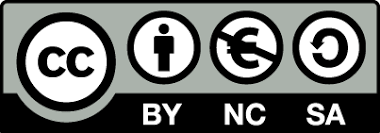บทคัดย่อ
งานวิจัยชิ้นนี้ได้ทำการทดลองโดยการติดตั้งระบบการกรองน้ำผ่านเทคโนโลยีเมมเบรนซึ่งผ่านเยื่อกรอง 2 ชั้น ได้แก่ เยื่อกรองหยาบ 0.5 ไมครอน และเยื่อกรองละเอียดระดับรีเวอรสออสโมซิส ขนาด 4 x 40 นิ้ว ชนิด Polyamide thin film composite งานวิจัยชิ้นนี้ได้ใช้สถานที่ของศูนย์สาธารณสุขมูลฐานชุมชน (คสมช.) หมู่ 2 ต.ร่อนพิบูลย์ อ.ร่อนพิบูลย์ จ.นครศรีธรรมราช เป็นที่ตั้งของระบบเพื่อทดลองผลิตน้ำดื่มฟรีให้ประชาชน โดยใช้น้ำจากแหล่งน้ำบนภูเขาร่อนนาที่มีสารหนูปนเปื้อนสูงกว่ามาตรฐาน(0.10–0.16 ppm) ซึ่งจะเพิ่มขึ้นในฤดูร้อน และจากการสุ่มเก็บตัวอย่างน้ำที่ผ่านการกรองมาแล้วตั้งแต่วันที่ 18 มกราคม ถึง 31 มีนาคม 2548 ซึ่งตรวจไม่พบสารหนู (<0.01 ppm) และจากการทำแบบสอบถามจำนวน 283 ชุดพบว่าประชาชนใน คสมช. ต้องการให้ในชุมชนมีระบบผลิตน้ำไว้ใช้เอง และทางคณะผู้วิจัยยังพบว่า ชุมชนหมู่ 2 มีความตื่นตัวสูงต่อการจัดการปัญหาชุมชน เมื่อโครงการนี้สิ้นสุดผู้ใหญ่บ้านหมู่ 2 ได้ของบประมาณจากองค์การบริหารส่วนตำบลร่อนพิบูลย์จำนวน 200,000 บาท เพื่อสนับสนุนระบบผลิตน้ำดื่ม โดยจะบริหารจัดการกันในรูปแบบของคณะกรรมการหมู่บ้าน
บทคัดย่อ
A mobile membrane filtration unit was installed for 3 months at Moo 2, in Ronpiboon
District, Amphur Ronpiboon, Na-korn-sri-tham-ma-rat Province, from January to March,
2005. It was to produce arsenic free drinking water, serving 550 families in the area. The unit
comprises of 2.2 kW pump, 1 microfiltration unit (0.5µm), and 1 nanofiltration membrane of
4x40 inch. made from polyamide thin film composite. Water supply for the unit was from
rain water reservoir at the Ron-Na Mountain nearby the district through pipeline system. It
was found that arsenic level in the pipeline water gradually increased from 0.10 to 0.16 ppm.
during the period and water pH was between 4.5-5.2, slightly lower than the accepted level
(6.5-8.5). However, no water treatment was made, except caution was taken during rainy
season, due to some fine sand being flushed into the pipeline system.
The filtration system produced arsenic free (<0.01 ppm) drinking water at 208 L/h at
the beginning and gradually declined to 198 L/h and the end of the project. The decline of the
production rate indicated some fouling on the membrane. After 2 hour washing, the
production rate was resumed. About 10,000 L of drinking water was produced, which was
rather small compared to the number of families. Questionnaires collected by an NGO in the
area revealed that only 34.6% out of 283 families utilized the water. The major problem was
the distance and most families well prepared during the year by having sufficient water
reserves. However, under water shortage only 42% consumed commercial water. Some
families obtained reserved rain water from their neighbors and others still used water directly
from the pipelines, due to poverty. On 0.50 Baht/L bases, this community spent about 11,000
Baht/mth for house-whole use and 97.5% of the questionnaires preferred to own a filtration
system for community health reason. The estimated cost of drinking water was 0.15 Baht/L,
assuming 10 hour operationg/day at 100 Baht/day wage. This was based on 5 day work/week
in 52 weeks/year.
This community seemed to be alert on health quality and management. There is SubDistrict Committee meeting monthly, where problems can be raised and solved. It is envisaged
that if the community reaches some support from District Committee, clean drinking water
should be available sufficiently for everyday consumption. Towards the ending of this
project, the sub-district community leader in Moo 2 has sent in a request of 200,000 Baht to
the District Committee for a community drinking water unit. This, in return, an amount of
money will circulate in the community, which should benefit finally to everyone under good
management.


